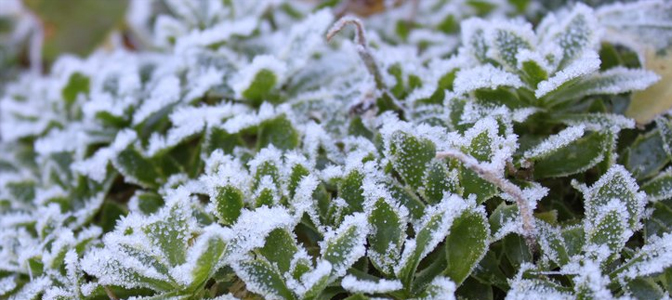Blog, Fall, Uncategorized
Winterizing Your Garden For Our Wildlife Friends
Modified From www.emmitsburg.net/gardens
Winter is arriving sooner than you think, and there are bound to be several cold snowy or rainy days over the next several months. Now is the time to assess our backyard gardens to see how wildlife-friendly they are – or could be – with a little human help. By providing food, water, cover, and places for wildlife to raise their young, backyard gardeners can make a difference, even during the cold winter months.
The best way to offer winter food for wildlife is by planting vegetation that produces berries, nuts, or seeds. Some good choices would be viburnums, sumac, dogwood, and the deciduous winterberry holly. Seed heads on flowers can be left on the perennials like coneflowers to provide visual interest in the winter garden as well as food for wildlife. For example, juncos, sparrows, and goldfinches eat the seeds of ragweed and native species of sunflowers, mints and thistles.
Bird feeders, of course, see the most activity in winter when natural foods are scarce. High-calorie foods like black-oil sunflower seed and suet can provide enough energy to help birds through cold winter nights. Place feeders where they will be protected from the wind and are close to the house for easy viewing. Remember to keep feeders clean to protect birds from the spread of disease caused by moldy seed or seed contaminated by droppings. Feeders can also provide food for squirrels and white-footed mice – and, indirectly, for predators like foxes and owls that might feed on the smaller seed-eating animals.
It is important to provide places where wildlife can find cover from predators and cold winter weather.Planting native evergreens, such as cedar, fir, spruce, and hemlock, can provide this valuable cover for numerous songbirds and small mammals. You can also install winter roosting boxes. Plans for roosting boxes are available from many books and can be purchased from your local bird shop.
Winter is also great time to create a brush pile. By collecting yard debris like branches, twigs, and fallen leaves, you can create cover for birds and small mammals, like rabbits, and at the same time offer a hibernation place for eastern box turtles, salamanders, and insects. Fallen leaves can also be used as mulch to protect plant roots from freezing temperatures, or composted and used as organic fertilizer next summer.
Water can be scarce for wildlife in winter when natural sources are frozen. While most creatures are seeking drinking water, birds are also looking for bathing water. Bathing helps birds to stay warm by keeping their insulating feathers in tip-top condition. Keeping your birdbath clean and free from ice will help birds and other creatures to survive the winter. Heated birdbaths, which keep the water just warm enough to keep from freezing and use little electricity, are also available.
Finally, winter is the time to plan ahead for next year. So look around your property for places where berrying shrubs can provide food, evergreen trees and a brush pile can provide cover, and a birdbath or pond can provide water in the years to come.

